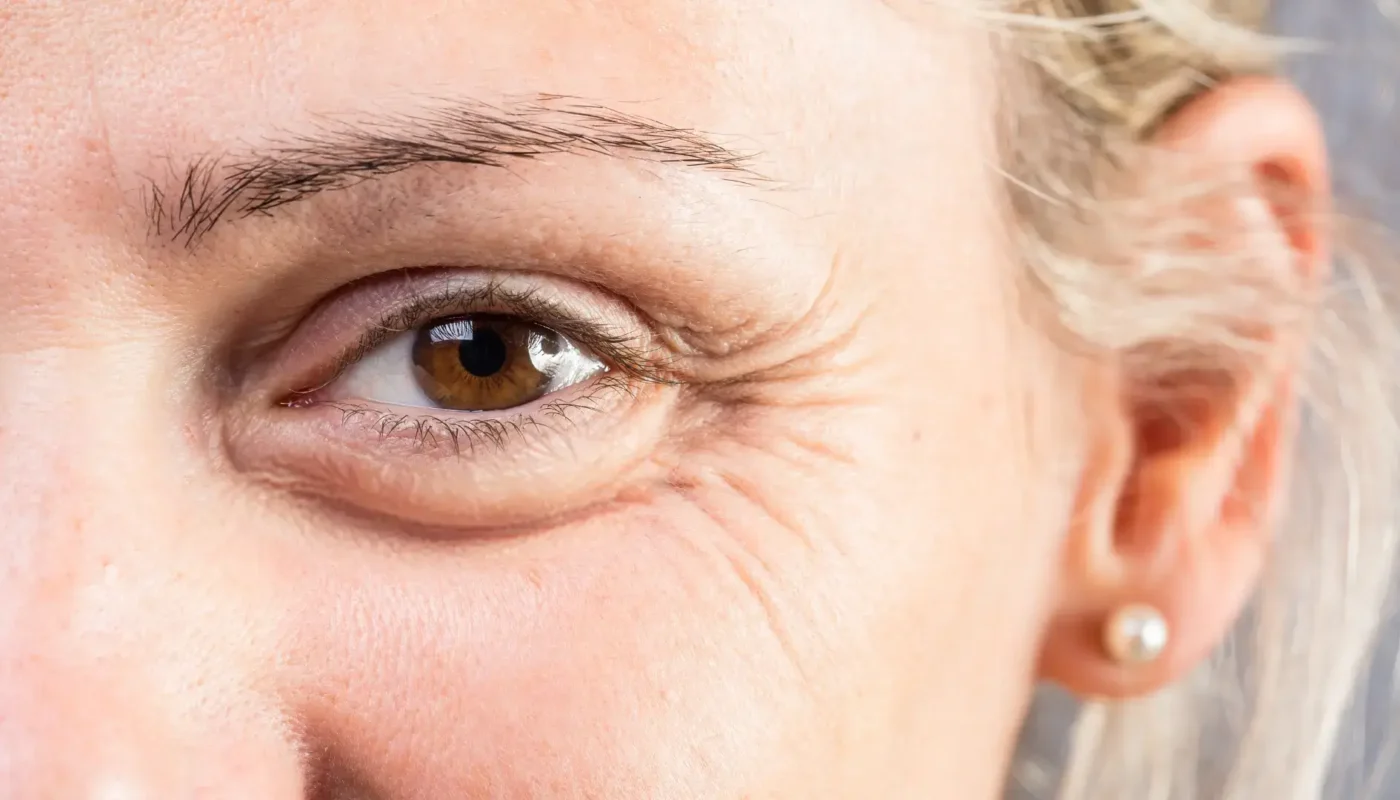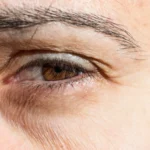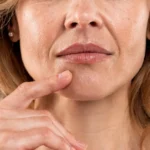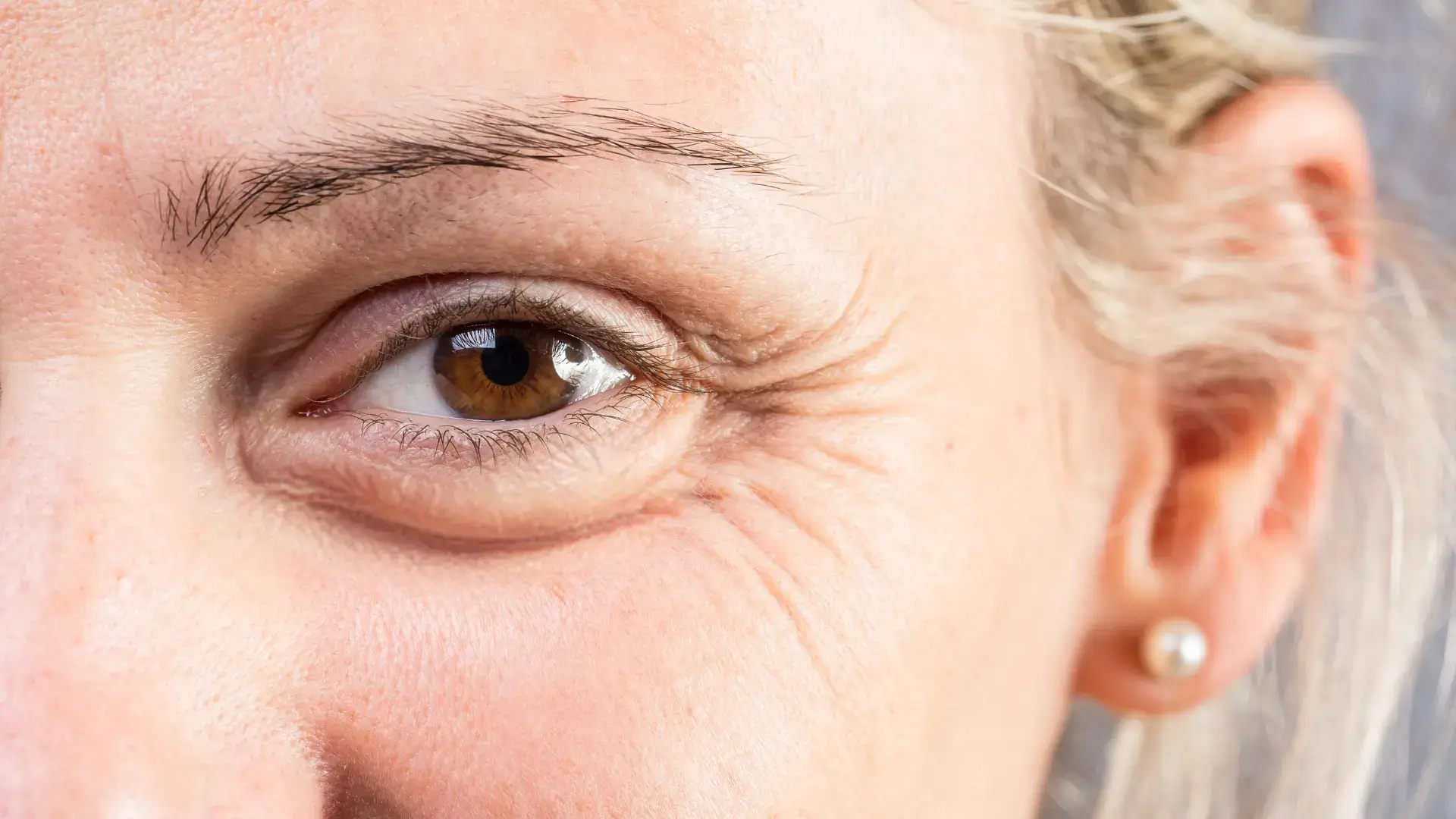
Did you know that young and adult patients of all skin types often grapple with dark circles under their eyes? This common aesthetic concern has led many to seek safe and effective treatments that can help them regain a more youthful and refreshed appearance.
Dark circles under the eyes lead to a tired and older-looking appearance. For individuals searching for a prompt solution for these under-eye concerns, Restylane injections under eyes offer a non-surgical solution. This option results in immediate improvements, long-lasting, and natural-looking results with minimal downtime required.
This article will explore Restylane injections under eyes, patients’ before-and-after photos, patient selection criteria, and Restylane treatment protocols.
Key Takeaways
- Restylane injections under eyes can fill in the hollows, rejuvenate the dark circles, and address other under-eye concerns.
- Restylane under-eye treatments are suitable for individuals over 21 experiencing volume loss or skin laxity under the eyes.
- During the initial consultation, medical professionals assess the patient’s under-eye concerns, overall facial anatomy, and medical history.
- This patient-centric approach can help medical professionals maximize the product’s benefits and achieve optimal outcomes.
- Patients must strictly follow the medical professional’s instructions for post-treatment to ensure a safe and smooth recovery period.
About: Medica Depot is your trusted all-in-one supplier, offering a range of high-quality medical injectables and supplies. Buy Restylane at Medica Depot today! Whether for health professionals, plastic surgeons, dermatologists, licensed estheticians, or other specialists, we can offer genuine, brand-name products you may need. With Medica Depot, we prioritize serving you better to improve the patient’s quality of life.
Understanding Restylane for Under-Eye Treatments
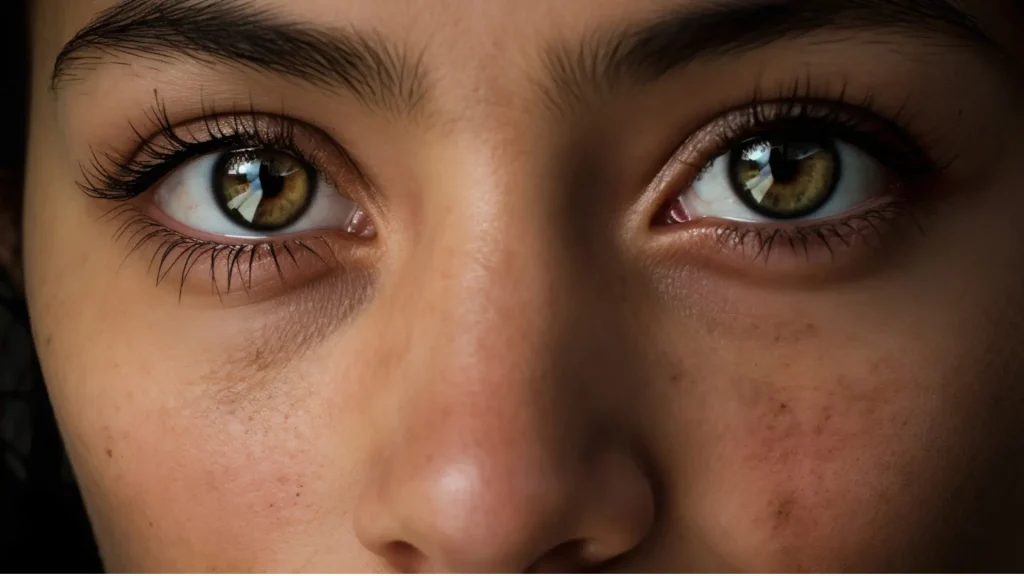
Restylane produced a collection of hyaluronic acid (HA) dermal fillers, each with approved uses by the US Food and Drug Administration. Its unique formulation utilizes two patented technologies: non-animal stabilized hyaluronic acid (NASHA) and XpresHAn. These technologies create and ensure Restylane’s clear HA gel offers precision, structure, movement, and natural expression during and after the treatment.
Providers use this product to smooth wrinkles and add volume to the skin, especially in the facial area. Restylane injections under eyes can fill in the hollows, rejuvenate the dark circles, and address other under-eye concerns. It helps correct volume loss, smooth wrinkles, and fill gaps formed by the lacrimal furrow.
It’s worth noting that Restylane has only indications for mid-to-deep injection into the facial tissue to correct moderate to severe facial wrinkles and folds and the lips.
The newest and recently US FDA-approved Restylane Eyelight product targets under-eye concerns; however, medical professionals know the versatility of these injectables. They may use Restylane to address these under-eye issues off-label, just like using Restylane Defyne for lips instead of Kysse or Silk.
Restylane replenishes lost volume in the under-eye area, smoothing hollows and fine lines. It also promotes collagen production, improving skin texture and elasticity over time. Moreover, common issues treated with Restylane under the eyes include the following:
- Dark Circles
- Under-eye Hollows
- Volume Loss
- Aging Signs, such as Fine lines and Wrinkles
Restylane’s Before and After
A male patient received 1 mL of Restylane Eyelight in the undereye hollows, smoothing the area and minimizing the dark circles. The treatment gave a refreshed look in the individual’s under-eye area. Moreover, the patient also underwent Restylane Contour injection in the midface (1mL) and Restylane Lyft in the cheeks (2mL).
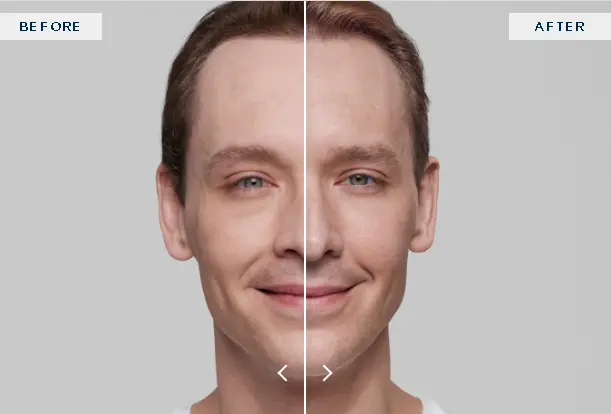 Photo Source: Restylane USA
Photo Source: Restylane USA
This Restylane-treated patient has a noticeable improvement in their under-eye area, filling the hollows and achieving a smoother appearance. Aside from Restylane Eyelights’ (1 mL) volumizing ability for the undereye hollows, the patient also received 2 mL of Restylane Contour in the cheek area.

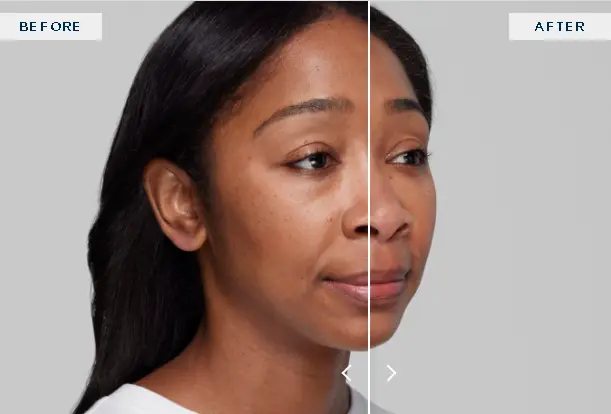 Photo Source: Restylane USA
Photo Source: Restylane USA
A female patient had undergone Restylane Eyelight injection for their under-eye hollows, achieving smooth and minimized bags under the eyes. The injection involved a 1.5 mL Restylane injection in the under-eye region to give the patient a youthful and no-tired look.

 Photo Source: Restylane USA
Photo Source: Restylane USA
Restylane Eyelight has achieved 93% of patients agreeing they had improved undereye hollows 18 months after optimal treatment. More than 94% of Restylane Eyelight-treated patients would recommend the treatment to a friend, while 9 in 10 patients thought their results looked natural after 18 months.
Patient Selection and Treatment Protocols
Restylane under-eye treatments are suitable for individuals over 21 experiencing volume loss or skin laxity under the eyes. Moreover, medical professionals must understand the contraindications and precautions of Restylane injections under eyes.
- Patients with severe allergies with a history of severe reactions (anaphylaxis).
- Patients allergic to the anesthetic lidocaine or any proteins used to make the hyaluronic acid in Restylane (bacterial proteins).
- Pregnant women, breastfeeding women, and children under 20 years old must not receive Restylane injections.
Healthcare providers may not recommend Restylane injections for those with certain health conditions. Meanwhile, the ideal candidates for Restylane injections under eyes are the following:
- Those with noticeable hollowed or sunken-in under-eye shadows
- Generally have mild volume loss and skin laxity under the eyes
- Excellent overall health with no existing health condition or medication
During the initial consultation, medical professionals assess the patient’s under-eye concerns, overall facial anatomy, and medical history. This ensures a comprehensive understanding of the patient’s needs and aligns the best treatment choice. Furthermore, providers will also discuss the treatment process, potential risks and complications, benefits, and realistic expectations after the treatment.
In addition, customizing treatment plans for individual patient needs is crucial for Restylane treatment. This patient-centric approach can help medical professionals maximize the product’s benefits and achieve optimal outcomes. They may also recommend combining non-surgical treatments for overall facial rejuvenation.
Post-Treatment Care and Follow-Up

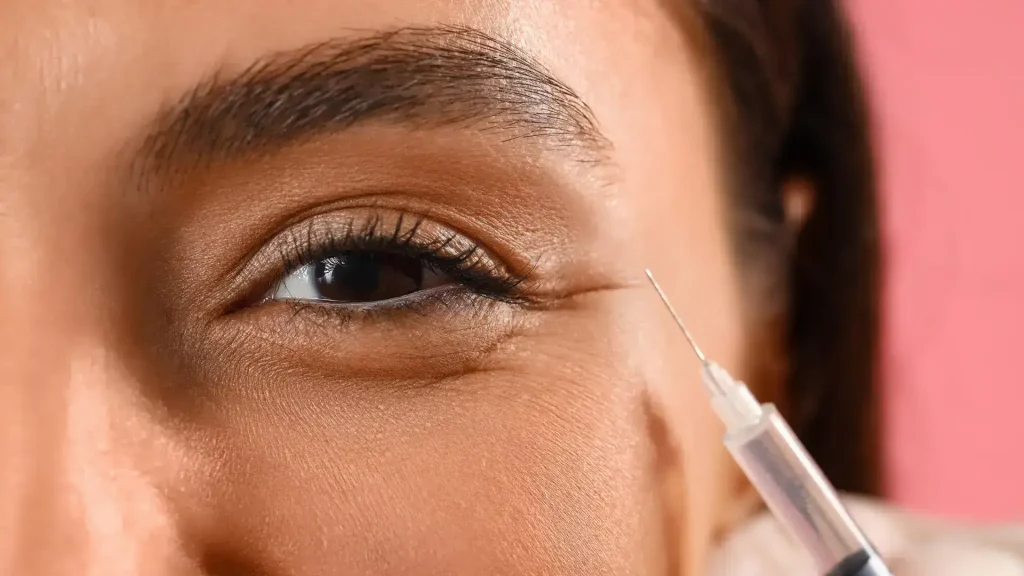
Patients must strictly follow the medical professional’s instructions for post-treatment to ensure a safe and smooth recovery period. It involves post-treatment care, long-term maintenance, and regular follow-up appointments. Immediate post-treatment care instructions for patients include:
- Use cold compresses to reduce swelling and discomfort in the injection site.
- Avoid taking aspirin, nonsteroidal anti-inflammatory medications (such as ibuprofen), St. John’s wort, or high doses of vitamin E supplements.
- Minimize strenuous exercise for the first 24 hours after treatment.
- Refrain from exposure to excessive heat, sun, or UV lamps for the first 24 hours after treatment.
- Until there is no redness or swelling, avoid exposing the treated area to intense cold or heat, such as sun lamps or sunbathing.
Furthermore, results vary depending on the product, an individual’s body chemistry or metabolism, and the amount of product used. Fortunately, Restylane’s Frequently Asked Questions provided some general ideas of the duration of effects.
- Restylane: Treatment results with Restylane in facial wrinkles and folds have been shown to last up to 18 months.
- Restylane Eyelight: Results from treatment with Restylane Eyelight in the undereye area have shown that, with optimal treatment, it can last up to 18 months.
For long-term care and maintenance, medical professionals may recommend touch-up treatments as needed. They can determine if the effects began wearing off during the regular visits or follow-up appointments. This also allows them to monitor progress, assess responses to treatment, identify any challenges, and make necessary adjustments.
Conclusion
Restylane has emerged as a reliable solution for facial skin treatments, specifically the under-eye areas. It addresses common concerns such as dark circles, under-eye hollows, and volume loss. The transformative effects of Restylane are evident in the before-and-after images, showcasing significant improvements in tear-trough deformities and dark circles.
The treatment protocols involve careful patient selection, comprehensive consultation, and customized treatment plans. Post-treatment care is crucial for optimal results, involving immediate post-treatment care, long-term maintenance, and regular follow-up appointments. Restylane injections under eyes have proven to be a safe and effective method for rejuvenating and refreshing one’s appearance.
FAQs
1. What are Restylane injections under eyes treatment?
Restylane under-eye treatment is a non-surgical cosmetic procedure that involves injecting Restylane Eyelight. It consists of injecting hyaluronic acid dermal filler under the eyes to reduce the appearance of dark circles, hollows, and wrinkles.
2. What are the potential results of Restylane under eyes treatment?
The potential results of Restylane under-eye treatment include diminished dark circles, reduced under-eye hollows, smoother skin texture, and a more refreshed and rejuvenated appearance around the eyes. However, results can vary from person to person.
3. What should I consider before getting the treatment?
Before getting Restylane under eyes treatment, it’s essential to consult with a qualified and experienced healthcare professional to discuss your medical history, potential risks, and expected outcomes. Be sure to communicate your expectations and ask any questions you may have before proceeding with the treatment.
References
- Goldman, A., Goldust, M., & Wollina, U. (2021). Periorbital Hyperpigmentation—Dark Circles under the Eyes; Treatment Suggestions and Combining Procedures. Cosmetics, 8(2), 26. https://doi.org/10.3390/cosmetics8020026
- Restylane® Eyelight | Product & Prescribing Information. (n.d.). Www.restylaneusa.com. Retrieved May 27, 2024, from https://www.restylaneusa.com/product/restylane-eyelight
Clinical aesthetics products refer to a category of products used in the field of medical aesthetics or cosmetic dermatology. These products are typically designed and formulated to be used under the supervision of healthcare professionals, such as dermatologists, plastic surgeons, or trained aestheticians. They are distinct from over-the-counter cosmetics in that they often contain active ingredients or formulations that require expertise in their application or administration.
Examples of clinical aesthetics products include:
-
Dermal Fillers: Injectable substances used to add volume, smooth wrinkles, and enhance facial contours. Examples include hyaluronic acid fillers like Juvederm and Restylane.
-
Botulinum Toxin (Botox): Injectables that temporarily paralyze facial muscles to reduce the appearance of wrinkles caused by repetitive movements, such as frown lines and crow's feet.
-
Chemical Peels: Solutions applied to the skin to exfoliate and improve its texture. They can treat acne, pigmentation issues, and signs of aging.
-
Laser and Light Therapies: Devices that emit focused light or laser energy to treat various skin conditions, including acne, scars, and signs of aging.
-
Prescription Skincare Products: Formulations containing active ingredients like retinoids (vitamin A derivatives), hydroquinone, or prescription-strength antioxidants to address specific skin concerns under medical supervision.


